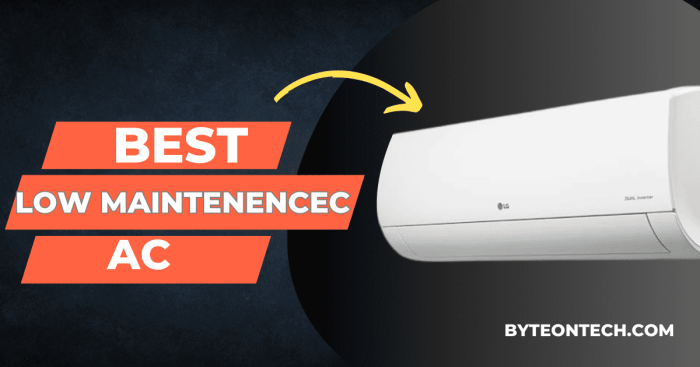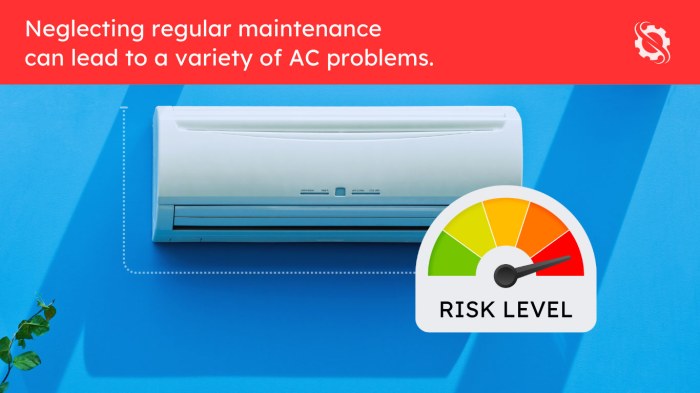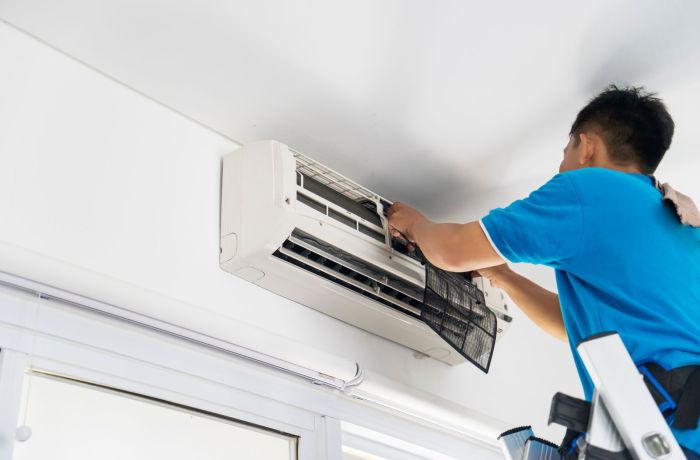Crafting a Breezy Experience: Exploring the World of Low Maintenance AC
As low maintenance AC takes center stage, this opening passage beckons readers into a world crafted with good knowledge, ensuring a reading experience that is both absorbing and distinctly original.
Low maintenance AC units offer a hassle-free approach to air conditioning systems, promising efficiency and ease of use. Let's delve into the key aspects of these systems and uncover the benefits they bring to homeowners and the environment.
Introduction to Low Maintenance AC

Low maintenance AC refers to air conditioning systems that require minimal upkeep and servicing to function efficiently. These systems are designed to operate smoothly with less frequent maintenance checks compared to traditional AC units.
Importance of Having a Low Maintenance AC Unit
Having a low maintenance AC unit is crucial for ensuring optimal performance and longevity of the system. Regular maintenance can help prevent breakdowns, reduce energy consumption, and improve indoor air quality.
Benefits of Opting for a Low Maintenance AC System
- Cost-effective in the long run as it reduces repair and replacement expenses.
- Enhanced energy efficiency leading to lower utility bills.
- Extended lifespan of the AC unit, saving money on premature replacements.
- Improved air quality by preventing dust and allergen buildup.
- Peace of mind knowing that your AC system is running smoothly with minimal maintenance requirements.
Features of Low Maintenance AC

Low maintenance AC units offer several key features that differentiate them from regular air conditioning systems. These features are designed to not only reduce the amount of maintenance required but also to improve overall energy efficiency and performance.
Energy Efficiency
Low maintenance AC systems are built with energy efficiency in mind. They are designed to operate more efficiently, using less energy to cool the same space compared to traditional AC units. This not only helps reduce energy consumption and lower utility bills but also minimizes the wear and tear on the system, leading to fewer maintenance needs over time.
Technology and Design
The technology and design aspects of low maintenance AC units play a significant role in reducing maintenance requirements. These systems are often equipped with advanced features such as self-cleaning filters, smart sensors for automatic adjustments, and durable components that require less frequent repairs or replacements.
Additionally, some low maintenance AC units are designed with easy-access panels for quick servicing and cleaning, making it simpler for homeowners to maintain the system on their own without the need for professional assistance.
Maintenance Tips for Low Maintenance AC
Maintaining a low maintenance AC unit is crucial to ensure optimal performance and longevity. By following these maintenance tips, you can keep your AC system running smoothly and efficiently.
Regular Filter Cleaning
- Check and clean the air filters every month to prevent dust and debris buildup.
- Dirty filters can restrict airflow and reduce efficiency, leading to higher energy consumption.
- Consider replacing filters every 3 months or as recommended by the manufacturer.
Keep the Coils Clean
- Inspect the evaporator and condenser coils annually and clean them if necessary.
- Dirty coils can affect the heat transfer process and reduce cooling capacity.
- Use a soft brush or vacuum cleaner to remove dirt and debris from the coils.
Monitor Refrigerant Levels
- Check the refrigerant levels regularly to ensure optimal cooling performance.
- Low refrigerant levels can indicate a leak, which should be addressed by a professional technician.
- Do not attempt to recharge refrigerant yourself; always consult a qualified HVAC technician.
Inspect for Leaks and Damage
- Periodically inspect the AC unit for any leaks, corrosion, or damage to the components.
- Address any issues promptly to prevent further damage and ensure safe operation.
- Schedule annual maintenance checks with a professional HVAC technician for thorough inspections.
Optimize Thermostat Settings
- Set the thermostat to an energy-efficient temperature to reduce strain on the AC system.
- Use programmable thermostats to adjust cooling settings based on your schedule and preferences.
- Avoid drastic temperature changes to prevent unnecessary energy consumption.
Cost Considerations and Savings
When it comes to owning a low maintenance AC unit, one of the significant advantages is the cost savings that come along with it. Let's delve into the financial aspects of investing in a low maintenance AC system.
Initial Investment Cost
One of the primary concerns for many homeowners when considering a low maintenance AC unit is the initial investment cost. While these units may have a slightly higher upfront price compared to traditional AC systems, the long-term savings they offer can outweigh this initial expense.
Long-Term Savings
Low maintenance AC systems are designed to require minimal repairs and maintenance over time. By investing in a unit that is built to last and operate efficiently, homeowners can save significantly on repair costs and regular maintenance expenses. This long-term cost savings can make low maintenance AC units a financially wise choice in the long run.
Environmental Impact of Low Maintenance AC

Low maintenance AC units play a significant role in reducing energy consumption and minimizing the environmental impact associated with traditional air conditioning systems. By focusing on efficiency and sustainability, these units offer several benefits that align with environmental goals.
Energy Efficiency
Low maintenance AC units are designed to operate more efficiently, using less energy to cool indoor spaces compared to older, less efficient models. This increased efficiency translates to lower electricity consumption, reducing the demand for power generated from fossil fuels.
As a result, these units help lower greenhouse gas emissions and combat climate change.
Environmental Benefits
The use of energy-efficient AC systems contributes to a healthier environment by decreasing the overall carbon footprint of buildings and homes. By using less energy and emitting fewer greenhouse gases, low maintenance AC units help preserve natural resources and support a more sustainable future.
Additionally, these units often incorporate eco-friendly refrigerants that are less harmful to the ozone layer, further enhancing their environmental impact.
Sustainability Goals
Incorporating low maintenance AC units into building designs and renovation projects can help organizations and individuals meet their sustainability goals. By reducing energy consumption and promoting environmental responsibility, these units support efforts to create more eco-friendly and energy-efficient spaces. Whether in residential, commercial, or industrial settings, the adoption of low maintenance AC units contributes to a greener and more sustainable world.
Concluding Remarks
In conclusion, low maintenance AC systems not only simplify our lives but also contribute to a sustainable future. By understanding their features, maintenance tips, cost considerations, and environmental impact, we can make informed decisions that prioritize both comfort and eco-consciousness.
FAQ Summary
How often should I clean or replace the filters in a low maintenance AC unit?
Filters in low maintenance AC units should ideally be cleaned or replaced every 1-2 months to ensure optimal performance.
Do low maintenance AC units require professional servicing?
While regular maintenance by professionals is recommended, low maintenance AC units are designed to minimize the need for frequent servicing.
Are low maintenance AC units more expensive to purchase initially?
Initially, low maintenance AC units might have a slightly higher upfront cost, but the long-term savings on maintenance and repairs make them cost-effective.